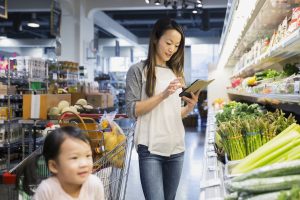Over this series of interviews, we are covering various perspectives in relation to sustainability questions, from what is happening globally to strategic considerations. In this post, we continue into more specific areas, bridging an industry and category view with analytics. I caught up with Ed Kerrigan, Principal Industry Adviser at SAS, to get his thoughts on the relationships and opportunities from a category perspective on sustainability.
 Balancing complex sustainability considerations across product categories
Balancing complex sustainability considerations across product categories
Shifts in sustainability
Ed, I always enjoy hearing your operational and practical view of the industry. We have discussed many topics together, having been heavily involved in category strategic decision making for grocery, retail and consumer goods, including the influence of sustainability in curating products and assortments. What shifts have you seen in the consideration of sustainability in curating products and assortments?
There have been a number of initiatives underway for some time. And, if anything, these trends have become more focused with a lot more resources, focus and energy being dedicated to them. Things like a lean, efficient supply chain have always been a consideration. But the focus on this has increased consideration of factors such as carbon emissions and route optimization. Full truck loads or full mixed truckloads are standard now.
In addition, there has been a real drive toward local sourcing, such as from within the country where the retailer is based and where the purchasing takes place. And what astonishes me are trends where some major national retailers have improved the payment terms for small local suppliers. This facilitates their cash flow and makes it viable for these suppliers to trade profitably – things like paying smaller local suppliers within 15 days as opposed to 30 days.
Sustainable packaging
And what else?
I recognize are major changes in product packaging. A good example is removing plastic packaging as much as possible and moving to more environmentally friendly and recyclable packaging. Retailing fresh produce as loose individual items as opposed to packed in a set quantity within plastic or cellophane, such as retailing peppers individually as opposed to a pack of three.
Last but not least, major moves to actively change product specifications are driven by the focus on sustainability. For example, reducing or removing palm oil altogether from certain products where possible. For example, back in 2018, Iceland supermarkets in the UK committed to removing palm oil from their own-label products.
Opportunities and challenges for retailers
What has struck you as the most significant opportunities for businesses to tackle and what are the key challenges you see?
There is still a lot of manual work and heavy lifting carried out by buying teams in curating products and accurately forecasting demand. And still a lot of teams within organizations work within silos with little joined-up thinking. These are areas where analytically driven solutions can play a role and facilitate collaboration.
The last three years have seen significant disruption and volatility in the grocery trade. The impact of COVID-19 and retailers having to deal suddenly with huge surges in demand and the consequent disruption to supply chains has posed some real challenges to grocery retailers trying to procure products on time and resulted in many gaps in product availability. An analytically driven planning environment with some short-term demand sensing capability could help many retailers here.
Finally, food waste is still a major problem. And in the context of sustainability, the focus on this has also increased. Again, short-term demand sensing – especially within the area of fresh and chilled grocery – could positively impact food waste.
Analytics for sustainability
If you placed yourself back into your previous roles now with the knowledge you have gained from analytics, what impresses you most?
One thing that impresses me about the analytical solutions we have is the degree of granularity we can get down to in the forecasting and planning process and the ability to bring in multiple causal factors impacting demand at various levels of the supply chain hierarchy. I certainly wasn’t forecasting or planning at this level of detail. My team and I were using Excel, as most teams do. But we all had different excel spreadsheets. And so although we thought we were collaborating effectively, the reality is that we all had different versions of what we considered the truth.
An analytically driven planning solution that can operate at significant granularity and incorporate multiple causal factors across the supply chain and in-store – as well as bringing in external data trends and which is on one platform – would not only have brought us together in one planning environment but also, without a doubt, would have resulted in much more accurate planning and forecasting.
SAS at EuroCIS
You will be available at the Microsoft booth at EuroCIS 2022 representing the SAS partnership. What exciting analytics will you be demonstrating?
We will be focusing on our connected supply chain analytics capability. This is our demand planning solution, which has the ability to incorporate transportation data that enables demand planners and forecast analysts to have much more proactive conversations with transportation planners and avoid potential problems and disruptions to the supply chain. In this way, our solution can help facilitate a much more resilient and sustainable supply chain.
Please visit us at the Microsoft stand at EuroCIS or our website to find out more.
